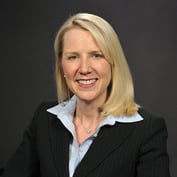Andy Brincefield has offered his clients Web-based access to portfolio reports for years. But he finds that the clients who want to see their portfolios online–and take the time to pull them up–are actually in the minority. “That’s why they come to us in the first place,” says the CFP with Consolidated Planning in Charlotte, North Carolina. “To make sense of it.” Still he’s not about to make that data unavailable.
Jim Christie, who is currently shopping for a new portfolio management program for his one-man shop, Freedom Wealth Management in Basking Ridge, New Jersey, also wants his clients to have the ability to access portfolio data and reports. But he’s also a bit hesitant. “It’s not an urgent thing right now,” says Christie. “I’ve still got clients who don’t know how to plug a computer into the wall. But I know it’s going to be critical going forward.”
Software companies are paying attention and offering advisors what they say they want: 24-hour portfolio access for investors, a paperless option, customizable views, and freedom from maintaining desktop software.
However, while many advisors want these tools, they also know that providing too much information to clients could create confusion. Some investors may not understand how to interpret the data without an explanation from their advisor. Others may pull up reports so frequently, and then react to sharp turns in the market, that they end up veering off track from the plan they had drawn up with their advisor during a calmer time.
Advisors’ preference? That they hold the key to what information is unlocked, and when. “Even I have a financial advisor,” says Bob Yacobucci, founder and CEO of the Hollidaysburg, Pennsylvania-based Portfolio Systems.
Portfolio Director: Advisor Driven
Although he spent years as an options trader–for his own amusement, he says–Yacobucci has spent the past 17 years focused solely on his own firm, and its product, Portfolio Director. After years of developing healthcare software for the Veterans Administration’s hospitals during the 1990s, Yacobucci found that his own side venture–options trading software–had started to gain a small following.
Yacobucci stopped trading on his own, and instead started selling the software, eventually expanding the platform to appeal to the broader user base of investment advisors. After nearly two decades in business, Yacobucci is still very hands on. Just five other employees helped develop the latest version of Portfolio Director Web, based in Java, and due for release this month.
While clients currently download the program from the Internet, and store it on their own machines, the next iteration of the program will be Web-based. Yacobucci plans to continue to support the desktop version, but he knows other clients are hungry and willing to pay a premium for an Internet-based, centrally supported version.
Soon he will be able to appeal to firms where partners prefer to spend their time–and resources–on serving clients rather than overcoming the bugs that inevitably hit even the best-written programs. Another attraction, Yacobucci believes, will be the ability to offer investors easier access to their reports, although for his current clients, that doesn’t seem to be the main push.
So as he spent the last three months developing the new Web-based version, Yacobucci walked a fine line between making the site user-friendly enough for an investor to understand, but was also sensitive to advisors who want control over the amount of data a client sees. An advisor will be able to load reports onto an investor-friendly side of the site–but only if he wants. Ultimately, Yacobucci understood that his advisor clients liked easy access for themselves and for the client as long as the advisor remained the gatekeeper.
PortfolioCenter: Customizing for the Client
Schwab knows very well that software tools that confuse advisors, or make them feel they’ve lost any control over their data, is a non-starter, not to mention a non-seller.
Which is why Schwab is constantly fine-tuning its PortfolioCenter platform, releasing four upgrades in just the last two years. With its advisors telling Schwab that they use the portfolio management system as their primary tool, the company focused most of its efforts in this latest release (4.3) on that piece of the software. “We notice as we talk with our advisors that this is the core technology that they use,” says Dan Skiles, vice president of technology for Schwab Institutional, based in Denver, Colorado. “So it’s got to work, and it’s got to work right.”
In 4.3, Schwab offers PortfolioCenter’s 3,300 clients more customization than ever before. Reports can be built by grouping client accounts with similar characteristics into so-called Smart Sets, the way advisors want, not according to subsets prescribed in the program. “We let them create any field they want,” says Skiles. “There’s a lot of flexibility.”
Launched in 2004, PortfolioCenter is actually an evolution of Schwab’s former platform Centerpiece, an 18-year-old program whose architecture, Skiles says, needed upgrading. The Schwab team spent five years before releasing the transformed software tool that they built on a SQL platform, an open architecture design that allowed Schwab to scale PortfolioCenter in a way it could never have imagined with Centerpiece.
In addition to upgrades every six months, Schwab holds Web-based and local training sessions, and offers networking services to connect advisors to each other so they can learn new ways of using the program. Schwab believes its advisors’ comfort with the software is paramount.
In this latest release, the firm also focused on upgrading its billing tool, giving users more options on how to charge accounts. With some simple keystrokes, advisors can choose between billing clients directly and having fees debited automatically.
Already at work on its next version, slotted for summer 2007, Schwab is pushing to make managed accounts data easier to read and display. Now both advisors and clients will be able to see which specific stocks are held in those separate accounts.

Eagle: Changeable Views
Rich Chambers relies heavily on his portfolio management software to bill clients, rebalance portfolios, and create reports. “I would call it essential,” he says. With three partners in his Menlo Park, California firm, Investor’s Capital Management, and no administrative assistant, Chambers needs all the help he can get. One thing he wishes his current program could do is directly link the portfolio report it creates to his Web site, and make it easier for clients to find the information online. “That takes a long time,” he says. “Generally 10% [of clients] can’t remember how to log in.”








 January 01, 2007 at 02:00 AM
January 01, 2007 at 02:00 AM










